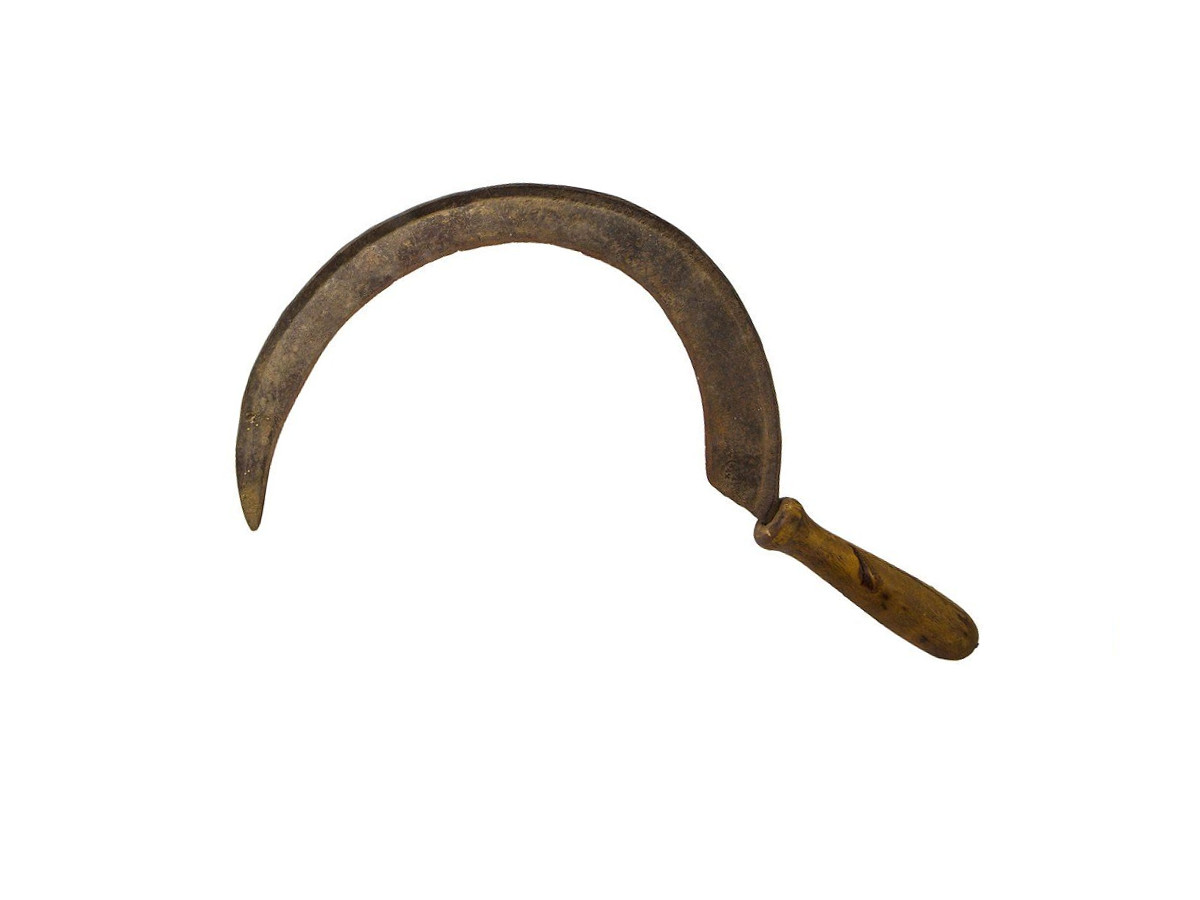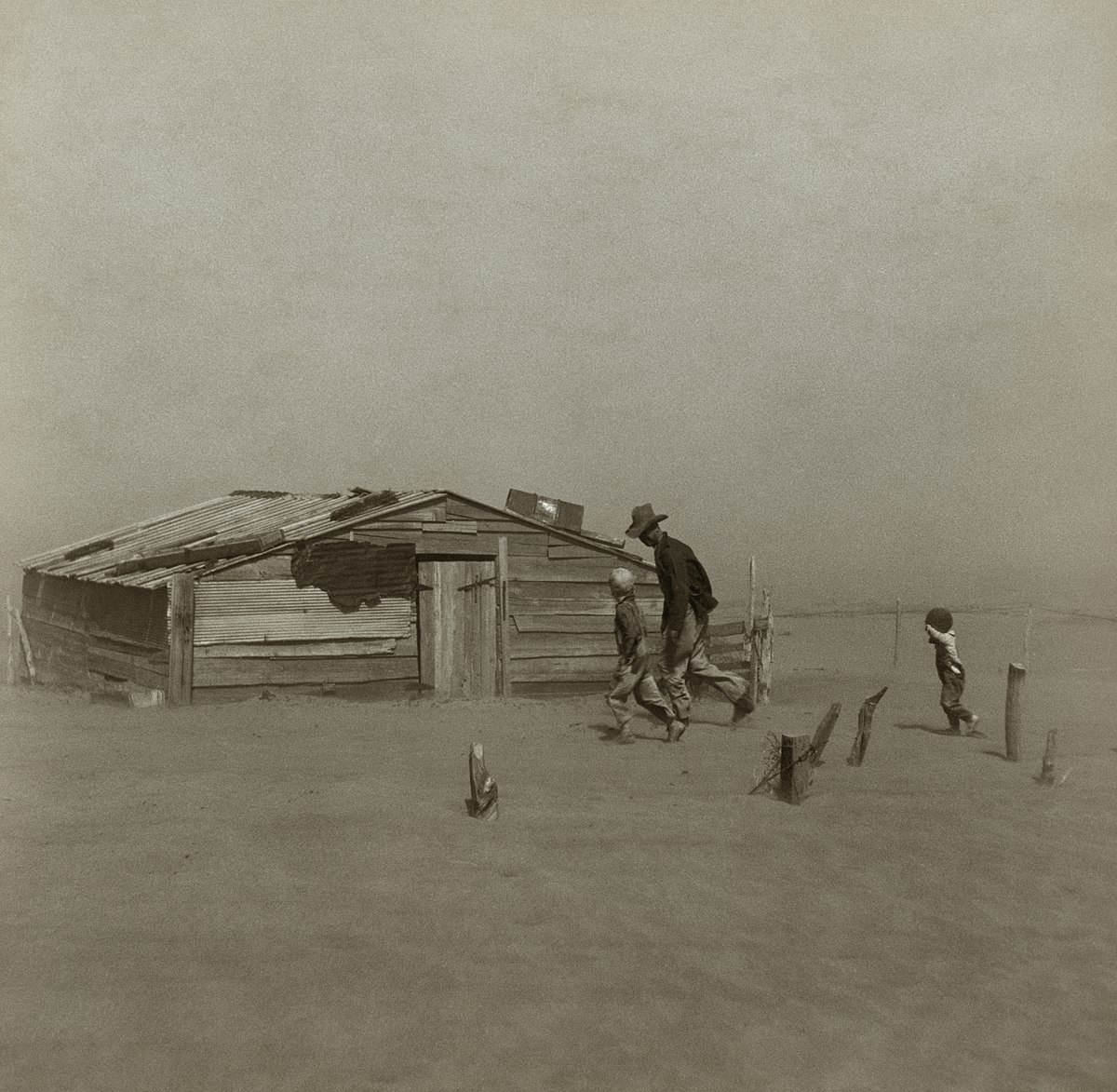The combined effects of the disruption of the Russian Revolution, which decreased the supply of wheat and other commodity crops, and World War I increased agricultural prices; this demand encouraged farmers to dramatically increase cultivation. For example, in the Llano Estacado of eastern New Mexico and northwestern Texas, the area of farmland was doubled between 1900 and 1920, then tripled again between 1925 and 1930. The agricultural methods favored by farmers during this period created the conditions for large-scale erosion under certain environmental conditions.
"large scale erosion" innocuous words for God's ongoing plagues and apocalypses in response to selfishness and greedy exploiting his creation
The widespread conversion of the land by deep plowing and other soil preparation methods to enable agriculture eliminated the native grasses which held the soil in place and helped retain moisture during dry periods. Furthermore, cotton farmers left fields bare during winter months, when winds in the High Plains are highest, and burned the stubble as a means to control weeds prior to planting, thereby depriving the soil of organic nutrients and surface vegetation.
bruh whats the deal with kulaks and lighting food on fire lol...typical demon praxis
The dust clouds blew all the way to Chicago, where they deposited 12 million pounds (5,400 tonnes) of dust. Two days later, the same storm reached cities to the east, such as Cleveland, Buffalo, Boston, New York City, and Washington, D.C. That winter (1934–1935), red snow fell on New England.
Red Snow in Lovecraft country
The economic effects persisted, in part, because of farmers' failure to switch to more appropriate crops for highly eroded areas. Because the amount of topsoil had been reduced, it would have been more productive to shift from crops and wheat to animals and hay. During the Depression and through at least the 1950s, there was limited relative adjustment of farmland away from activities that became less productive in more-eroded counties.
animals are of course essential to fertilizing soil, but its all about profit, not regenerating life
Some of the failure to shift to more productive agricultural products may be related to ignorance about the benefits of changing land use. A second explanation is a lack of availability of credit, caused by the high rate of failure of banks in the Plains states. Because banks failed in the Dust Bowl region at a higher rate than elsewhere, farmers could not get the credit they needed to obtain capital to shift crop production. In addition, profit margins in either animals or hay were still minimal, and farmers had little incentive in the beginning to change their crops.
Capital-intensive agribusiness had transformed the scene; deep wells into the aquifer, intensive irrigation, the use of artificial pesticides and fertilizers, and giant harvesters were creating immense crops year after year whether it rained or not. According to the farmers he interviewed, technology had provided the perfect answer to old troubles, such of the bad days would not return. In Worster's view, by contrast, the scene demonstrated that America's capitalist high-tech farmers had learned nothing. They were continuing to work in an unsustainable way, devoting far cheaper subsidized energy to growing food than the energy could give back to its ultimate consumers.
high tech DSA redditors at /r/neoliberal: "degrowth wants to make us poor, my comrades are Walmart and Monsanto, who are trying to feed the global poor by replacing natural soil ecology with sterile nanotechnology. We no longer have a need for bees, we can just use bee-drones you fucking eco-Stalinist"


Pretty sure that coherency is inversely related to score on the BMF scale.
I'm giving this one a 2/10 myself.
Nah, the scale simply tracks how GOOD of a post it is.